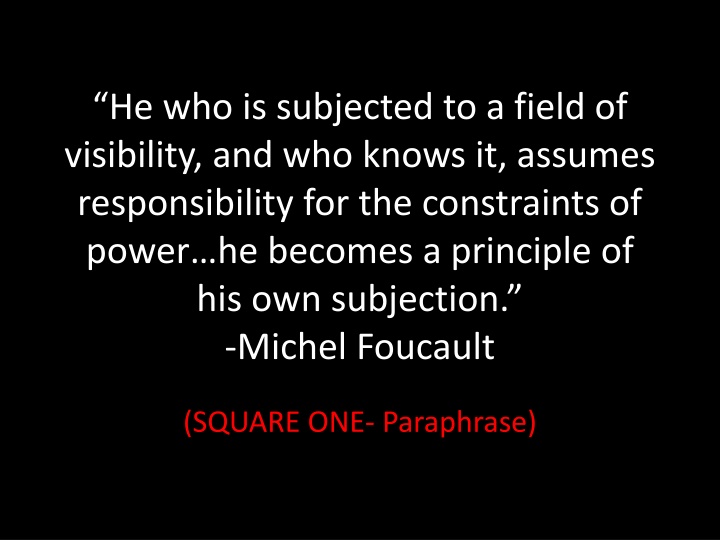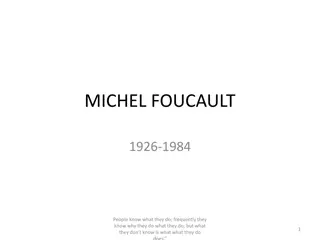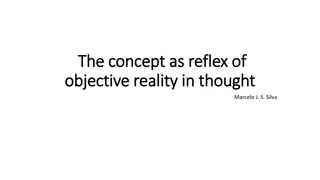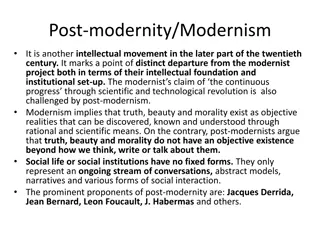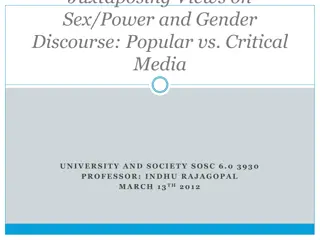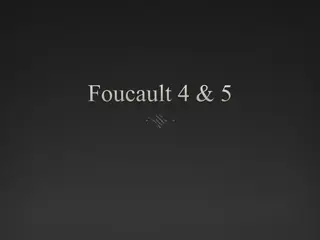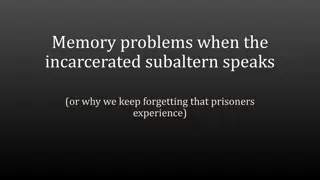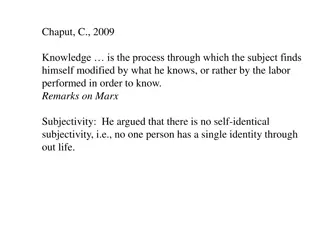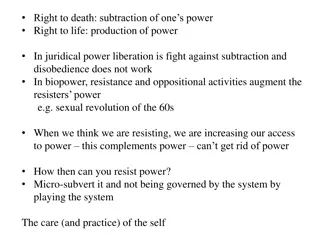Exploring Power Dynamics: Foucault's Concepts and Their Applications
Delve into the intricacies of power and visibility with insights from Michel Foucault's theories on Panopticism and discipline. Understand the implications of surveillance, individualization, and the role of institutions in shaping our lives. Reflect on the relevance of historical and fictional dystopias, North Korea as a case study, and how power influences personal and global dynamics. Dive deeper into Foucault's ideas to analyze the Panopticon in various contexts, including schools and prisons, and ponder the questions raised regarding power structures governing society.
Download Presentation

Please find below an Image/Link to download the presentation.
The content on the website is provided AS IS for your information and personal use only. It may not be sold, licensed, or shared on other websites without obtaining consent from the author.If you encounter any issues during the download, it is possible that the publisher has removed the file from their server.
You are allowed to download the files provided on this website for personal or commercial use, subject to the condition that they are used lawfully. All files are the property of their respective owners.
The content on the website is provided AS IS for your information and personal use only. It may not be sold, licensed, or shared on other websites without obtaining consent from the author.
E N D
Presentation Transcript
He who is subjected to a field of visibility, and who knows it, assumes responsibility for the constraints of power he becomes a principle of his own subjection. -Michel Foucault (SQUARE ONE- Paraphrase)
(SQUARE TWO)Answer these questions 1. What is the value of studying both historical and fictional models of dystopias? 2. How can an understanding of North Korea function as useful information for you and your life? 3. How do you view the use of power, both personally and globally? Is it a good thing? A bad thing? 4. What institutions of power govern your life?
Panopticism (Jeremy Bentham) (Paraphrase this information for your notes) a circular building with an observation tower in the center of an open space surrounded by an outer wall. This wall would contain cells for occupants. This design would increase security by facilitating more effective surveillance. Residing within cells flooded with light, occupants would be readily distinguishable and visible to an official invisibly positioned in the central tower. Conversely, occupants would be invisible to each other, with concrete walls dividing their cells Bentham s model is usually associated with prisons, the panoptic style of architecture might be used in other institutions with surveillance needs, such as schools, factories, or hospitals
Notes after reading a selection from Discipline & Punish by Michel Foucault (1975) (paraphrase for your notes) By individualizing the subjects and placing them in a state of constant visibility, the efficiency of the institution is maximized. Furthermore, it guarantees the function of power, even when there is no one actually asserting it. It is in this respect that the Panopticon functions automatically. Foucault compares jails, schools, and factories in their structural similarities.
Further discussion of Foucault (SQUARE THREE) 1. How can your experience as a student at Pebblebrook High School illustrate principles of the Panopticon? Think beyond the literal. 2. How does Nothing to Envy illustrate the Panopticon? Include textual evidence for this answer.
3-2-1 Countdown (SQUARE FOUR) Record any questions concerning today s material in this space. Wanna check out the primary source for this lesson? http://dm.ncl.ac.uk/courseblog/files/2011/03/michel-foucault-panopticism.pdf
What Now? Read chapter 3 of Nothing to Envy -OR- Read the second section for your blog post due Friday -OR- Begin composing your 2ndBlog Post
